Suchergebnisse
Optimierung der SOLARenergienutzung in URbanen Energiesystemen (URSOLAR)
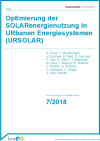
URSOLAR stellt EntscheidungsträgerInnen eine Roadmap zur integrierten urbanen Solarenergie-nutzung zur Verfügung. Es wird aufgezeigt, wie Photovoltaik (PV) und Solarthermie angepasst an infrastrukturelle und rechtliche Gegebenheiten in idealtypischen Stadtquartieren aus ökonomischer, ökologischer und sozialer Sicht sowie unter Berücksichtig von Stakeholder-Interessen optimal ge-nutzt werden können.
Schriftenreihe
7/2018
A. Posch, T. Brudermann, M. Buchner, E. Fleiß, D. Geringer, P. Hart, S. Hatzl, T. Kallsperger, G. Lang, T. Mayrold, E. Meißner, C. Reischl, G. Schnedl, S. Seebauer, K. Stöger, A. Würz-Stalder
Herausgeber: BMVIT
Deutsch, 137 Seiten
Downloads zur Publikation
The Green P - Nutzung von städtischen Verkehrsflächen für die Produktion von Biomasse
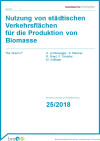
Zahlreiche Verkehrsflächen im städtischen Umfeld werden nur einen geringen Teil der Zeit tatsächlich genutzt. Inhalt dieses Projekt war, die Möglichkeit zu untersuchen, solche Flächen durch Integration von Photobioreaktoren zusätzlich zur Produktion von Biomasse zu nutzen und die Systeme möglichst vollständig in die urbanen Stoff- und Energiekreisläufe einzubinden.
Schriftenreihe
25/2018
K. Lichtenegger, K. Meixner, R. Riepl, F. Schipfer, M. Zellinger
Herausgeber: BMVIT
Deutsch, 73 Seiten
Downloads zur Publikation
G2G – Innovationsachse Graz-Gleisdorf
Entwicklung von Test- und Demonstrationsgebieten im Rahmen von ausgewählten Stadt(teil)entwicklungsvorhaben entlang der Innovationsachse Graz-Gleisdorf mit Fokus auf die Bereiche Energie, integrierte Gebäudetechnologien, smarter Stadtraum, kompakte Siedlungsstruktur, Nutzungsmix - Stadt der kurzen Wege, Generationenwohnen, intermodale Mobilität sowie Informations- und Kommunikationstechnologien (IKT).
vilFIT – Villach Fit 4 Urban Mission
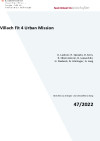
In diesem Projekt werden Maßnahmen, Strategien und der notwendige Kapazitätsaufbau für die Erreichung der Klimaneutralität der Stadt Villach vorangetrieben. Im Vordergrund stehen soziale und strukturelle Innovationen (Partizipationsprozesse, Entwicklung von Pilotinitiativen, Öffentlichkeitsarbeit, etc.) sowie die Definition von Netzwerken und Strukturen bzw. Controlling- und Monitoring-Instrumenten.
Schriftenreihe
47/2022
U. Lackner, R. Sposato, D. Kern, R. Obernosterer, B. Lepuschitz, H. Daxbeck, N. Hörzinger, G. Lang
Herausgeber: BMK
Deutsch, 37 Seiten
Downloads zur Publikation
Lightyard - Vom Innenhof zum Lichthof
Es wurde untersucht, ob die intelligente Anordnung unterschiedlicher Materialien tageslicht-technisch optimale Lösungen für die Sanierung von Innenhöfen ermöglicht. Das Anheben der Tagesbelichtung in unteren Geschoßen auf mehr als das 10-fache ist damit realistisch. Zusätzlich wurde ein Berechnungstool konzipiert, mit dem optimierte Innenhoflösungen erstellt werden können. Dabei werden lichttechnische, wirtschaftliche und bautechnische Kriterien berücksichtigt.
GameOpSys - Gamification für die Optimierung des Energieverbrauchs von Gebäuden und übergeordneten Systemen
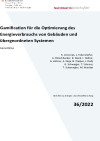
Zentrales Ziel ist die Entwicklung einer mobilen Anwendung, welche durch Partizipation des Nutzers und der Nutzerin als neue Daten- und Informationsquelle die Energieoptimierung und Planung von Gebäuden, Quartieren und übergeordneten Energiesystemen ermöglicht. Die Entwicklung der Anwendung erfolgt stark transdisziplinär und integriert dabei mathematische Methoden der Simulation und Optimierung sowie psychologische Aspekte des Nutzerverhaltens um neue Geschäftsmodelle zu erarbeiten und neue Märkte zu erschließen.
Schriftenreihe
36/2022
K. Corcoran, L. Eckerstorfer, A. Fleischhacker, B. Glock, I. Hafner, G. Lettner, A. Noja, N. Popper, J. Radl, G. Schweiger, T. Schranz, T. Schwengler, M. Wastian
Herausgeber: BMK
Deutsch, 50 Seiten
Downloads zur Publikation
Nachhaltige Sanierung und Wohnraumaktivierung einer Einfamilienhaussiedlung in Mistelbach (ReHABITAT-Siedlung)
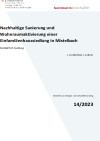
Sondierung einer nachhaltigen Einfamilienhaus-Siedlungssanierung mit ganzheitlich gedachter Nachhaltigkeitsdefinition, die beim Menschen ansetzt, auf Suffizienz basiert und auch Grün-, und Freiräume, soziale Faktoren und Mobilität mitberücksichtigt. Ergebnis ist ein integrales Gesamtkonzept auf Haus- und Siedlungsebene und eine übertragbare Herangehensweise für andere Gemeinden.
Schriftenreihe
14/2023
J. Lindenthal, J. Leitner
Herausgeber: BMK
Deutsch, 81 Seiten
Downloads zur Publikation
Green BIM - Bauwerksbegrünung als Teil BIM-basierter Planung und Pflege
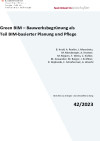
Verschmelzung der Begrünungs- und BIM-Planung zur friktionsfreien Planung, Ausführung, Umsetzung und Pflege. Durch die Analyse der Fallbeispiele wurde geprüft, inwieweit für die Gebäudebegrünung typische Planungsschritte mit branchentypischen Softwareprodukten BIM-gerecht bearbeitet werden können. Als Ergebnis wurden Ergänzungen im internationalen Standard für Datenstrukturen im Bauwesen (IFC / ISO 16739) angestrebt.
Schriftenreihe
42/2023
Herausgeber: BMK
Deutsch
Downloads zur Publikation
Digital Urban Mining Platform: Assessing the material composition of building stocks through coupling of BIM to GIS (BIMstocks)
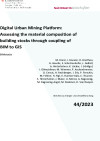
Hauptziel von BIMstocks ist die Entwicklung einer Methodik für die digitale Erfassung der materiellen Zusammensetzung des Baubestandes für die Modellierung einer digitalen Urban Mining Plattform sowie Prädiktion der Recyclingpotentiale.
Schriftenreihe
44/2023
M. Honic, I. Kovacic, D. Breitfuss, G. Gourlis, S. Schützenhofer, J. Gallistl, A. Hinterleitner, K. Löcker, I. Schlögel, I. Gilmutdinov, M. Wimmer, P. Aschenbrenner, O. Cencic, H. Rechberger, I. Erb, P. Ferschin, M. Fellner, H. Figl, V. Huemer-Kals, C. Thurner, S. Hinterholzer, J. Maier, U. Moroz, A. Ragossnig, M. Ragossnig-Angst, M. Raskovic, D. Van Rooyen
Herausgeber: BMK
Deutsch, 57 Seiten
Downloads zur Publikation
Energetisch optimierte Siedlungsentwicklung unter Synergienutzung von Energieeffizienz, Raumplanung & Baukultur (SynENERGIE)
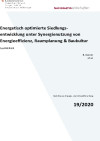
Ziel von SynENERGIE ist ein innovativer, holistischer Ansatz für urbane Siedlungsoptimierung. Fokus wird auf einen ganzheitlichen Analyserahmen sowie ein Entwicklungskonzept gelegt, das neben der Optimierung von Energieversorgung und -nutzung erhöhte Stoffströme (Errichtung und Entsorgung) auf Stadtteilebene mit einbezieht und zudem verstärkt auf die gezielte Synergienutzung von Energietechnologien in Abhängigkeit von Bau- und Siedlungstypologie achtet.
Schriftenreihe
19/2020
B. Karner, et al.
Herausgeber: BMK
Deutsch, 142 Seiten
Downloads zur Publikation
Integrative Quartiersplanung – Enabler auf dem Weg zum Plus-Energie-Quartier (PEQBacker)
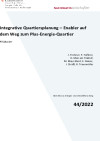
Entwicklung von Leitlinien zur Implementierung von Koordinationsstellen für Plus-Energie-Quartiere auf Basis der Recherche von Erfolgsfaktoren, der Sondierung von fehlenden Elementen bestehender Strukturen und der Konsultation einer breiten Stakeholdergruppe mit dem Ziel, die Transformation von bestehenden und entstehenden Quartieren Richtung Plus-Energie-Quartiere zu erhöhen.
Schriftenreihe
44/2022
J. Fechner, P. Haftner, O. Mair am Tinkhof, M. Mayr-Ebert, E. Rainer, I. Straßl, R. Traunmüller
Herausgeber: BMK
Deutsch, 43 Seiten
Downloads zur Publikation
Wohnen 4.0 - Digitale Plattform für leistbares Wohnen
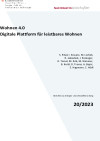
Im vorliegenden Forschungsvorhaben wurde das Rahmenwerk für die digitale Plattform "Wohnen 4.0" entwickelt, welche durch eine Parameter-Datenbank und Koppelung digitaler Werkzeuge die integrale Projektabwicklung unterstützt. Der Fokus lag dabei auf der Entwicklung und Nutzung von BIM-Objektbibliotheken für die modulare Off-Site Produktion im Geschoßwohnbau. Erstmalig wurden auch Nutzer:innen beteiligt und dadurch der zunehmend wichtiger werdende Aspekt der Partizipation integriert.
Schriftenreihe
20/2023
S. Pibal, I. Kovacic, M. Lorbek, R. Jakoubek, J. Reisinger, R. Temel, M. Ilcik, M. Wimmer, B. Kerbl, D. Travas, A. Bajric, E. Hagmann, C. Hödl
Herausgeber: BMK
Deutsch, 79 Seiten
Downloads zur Publikation
Energieeffizientes Beleuchtungssystem für den Menschen durch innovative Komponentenoptimierung und Tageslichtintegration (LessIsMore)
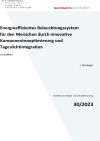
Human Centric Lighting (HCL) stellt die positiven visuellen und biologischen Wirkungen des Lichtes auf den Menschen in den Mittelpunkt, verbraucht dabei aber sehr viel Energie durch den ineffizienten Einsatz von Beleuchtungskomponenten sowie unzureichende Nutzung von Tageslicht. In LessIsMore wird testweise eine vorbildhafte HCL-Beleuchtung installiert und evaluiert.
Schriftenreihe
30/2023
J. Weninger
Herausgeber: BMK
Deutsch, 50 Seiten
Downloads zur Publikation
lieBeKlima - Qualitätssicherung der liegenschaftsübergreifenden Begrünung für urbane Klimaresilienz im Quartier „Am Kempelenpark“
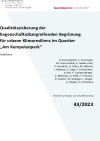
lieBeKlima hat zum Ziel, die Umsetzung eines liegenschafts- und systemübergreifenden Begrünungskonzeptes für das Quartier „Am Kempelenpark” anzustoßen und mit neuartigen, identitätsstiftenden Partizipationsprozessen und einem umfassenden Qualitätssicherungsprozess in die Realität zu bringen. Dabei liegt der Fokus auf einer verschränkten Betrachtung von integralen Begrünungskonzepten mit übergeordnetem Wassermanagement und Plus-Energie-Konzepten.
Schriftenreihe
43/2023
D. Enzersdorfer, S. Formanek, M. Grim-Schlink, K. Haider-Putz, P. Hendrich, G. Hofer, M. Hötschl, I. Hubauer, S. Jung, F. Kretschmer, A. Klie, P. Lampersberger, A. Mrkonjic, G. Peller, F. Prenner, B. Pucher, W. Sellinger, L. Steger, A. Stipsits, G. Tscherteu
Herausgeber: BMK
Deutsch, 140 Seiten
Downloads zur Publikation
Infoveranstaltung: Technologien und Innovationen für die klimaneutrale Stadt, Ausschreibung 2023
16.11.2023, 09:00 - 10:30 Uhr
Online
In dieser Online-Veranstaltung informieren BMK, Klima- und Energiefonds sowie FFG zur aktuellen Ausschreibung „Technologien und Innovationen für die klimaneutrale Stadt“.
CO2-Demobau - Sondierung zur Durchführbarkeit CO2-neutraler Demonstrationsbaustellen
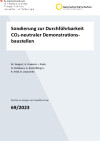
Durch Aufzeigen von grünen Innovationen, Vernetzung mit Stakeholdern der Baubranche und Anwendung der Erkenntnisse der Vorstudie "CO2 neutrale Baustelle" wird das Fundament für zukünftige CO2-neutrale Demonstrationsbaustellen gelegt. Diese Baustellen dienen als Best-Practice-Beispiele für die Bereiche Vergabe, Baubetriebsorganisation und -technologie.
Schriftenreihe
69/2023
M. Weigert, H. Daxbeck, J. Raab, N. Kisliakova, A. Bischofberger, R. Hölzl, B. Lepuschitz
Herausgeber: BMK
Deutsch, 100 Seiten
Downloads zur Publikation
Highlights der Bauforschung: Innovationen für die Grüne Stadt
14. Mai 2024, 09:00 - 12:30 Uhr
MA 39 - Prüf-, Inspektions- und Zertifizierungsstelle der Stadt Wien, Rinnböckstraße 15/2, 1110 Wien
Bei dieser Veranstaltung wurden aktuelle Ergebnisse aus Forschung und Technologieentwicklung im Bereich „Begrünung“ vorgestellt und mit Expert:innen diskutiert.
New European Bauhaus: Jour Fixe Austria
9. July 2024
Architekturzentrum Wien (AzW), Museumsplatz 1, 1070 Vienna
The event focussed on the exchange of national and international NEB activities and positions as well as networking among the participants.
Privatrechtliche Verträge als innovative stadt- und mobilitätsplanerische Planungs- und Steuerungsinstrumente (Urban MoVe)
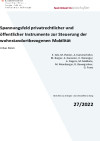
Im Forschungsvorhaben Urban MoVe soll anhand von Best-Practice Analysen und umgesetzter nationaler Praxisbeispiele untersucht werden, inwiefern sich privatrechtliche Verträge (z.B. Mobilitätsverträge, -fonds, städtebauliche Verträge) als kommunale Planungs- und Steuerungsinstrumente für Mobilität an Wohnstandorten eignen.
Schriftenreihe
27/2022
E. Selz, M. Platzer, A. Kammerhofer, M. Berger, A. Kanonier, K. Weninger, A. Degros, M. Malderle, M. Monsberger, B. Baumgartner, G. Franz
Herausgeber: BMK
Deutsch, 200 Seiten
Downloads zur Publikation
Sondierung für ein Mobile Mapping Reallabor – IoT- und geoKI-gestütztes Datenmanagement für die klimaneutrale Stadt (GeoDatKlim)
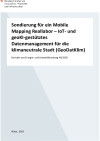
Vorbereitung eines Reallabors, das es zahlreichen Akteur:innen ermöglicht, den tatsächlichen Nutzen urbaner Daten bzw. deren KI-unterstützter Analyse für eine klimaneutrale Stadt zu beforschen. Mittels Klärung strategischer, technischer und rechtlicher Aspekte sowie im Wege von Potenzialanalysen entlang relevanter Anwendungsfälle werden die Rahmenbedingungen für eine offene, mehrjährige Forschungsumgebung (Reallabor) in Wien auf den Weg gebracht.
Schriftenreihe
49/2025
Nikolaus Summer, Christian Habernig, Martin Traunmüller
Herausgeber: BMIMI
Deutsch, 54 Seiten
